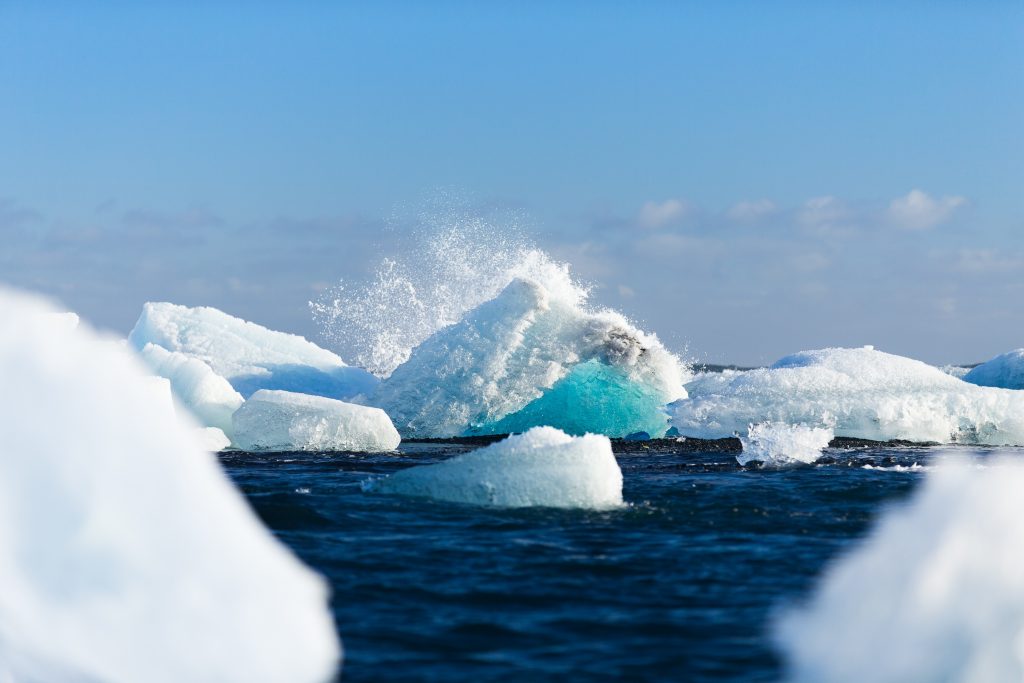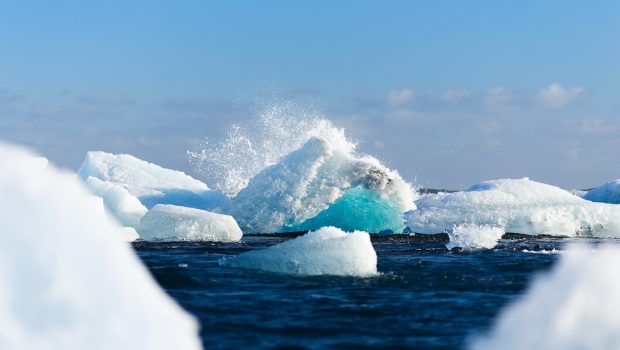Recent data shows air can melt ice sheets faster than sunlight
Conventional climate models designed to project ice sheet melts are simulated using the energy associated with sun rays. While these models can accurately forecast melt events in temperate weather conditions, scientists now say air content and its associate energy actually contribute more to surface melts during extreme weather conditions.
A group of researchers at York University, led by Robert Fausto, analyzes data from sixteen Programme for Monitoring of the Greenland Ice Sheet (PROMICE) stations operated in Greenland’s critical ablation zones. They’ve identified the main causes of glacial melting — radiant energy, which includes longwave and shortwave flux from sunlight, and nonradiative energy, which includes sensible and latent heat, rain, and subsurface flux.
“Ice sheet wide melt is usually dominated by radiant energy from sunlight,” said Fausto, the study’s lead author and researcher at the Geological Survey of Denmark and Greenland. But according to data from two particular events during the summer of 2012, that may not always be the case.

It’s estimated that if Greenland Ice Sheet melted, sea level would rise about 6 meters (20 feet). Credit: Pexel
Exceptional melt episodes
Satellite data revealed more than 98% of Greenland’s surface ice sheets had melted during two episodes in July 2012. The scope of the event was unprecedented in a scientific database dating back to 1978. The average daily melt rate for the two exceptional melt events was 0.07-0.08m per day, or 14% of the annual ablation average for the entire year among all operating PROMICE sites.
The researchers created a surface energy budget (SEB) model using hourly-averaged data to analyze the events. What astounded the researchers more than the extent of the melt was the cause behind it.
“The studied melt episodes [were] mostly driven by nonradiative energy fluxes,” the researchers wrote, not sunlight.
They separated and ranked the energy sources that contributed to the exceptional melt episodes and found that nonradiative energy fluxes comprised 60% of the melt energy on average. This air-driven melt apparently affected western Greenland most, where atmospheric flow brought anomalously warm and moist southern air to its sea surface. Advection current from the moist air formed low-level liquid clouds, which decreased the glacier’s ability to retain meltwater and increased sunlight absorption due to black carbon.
The group predicted such patterns, among others, will make significant contributions to annual ablation in the coming decades.
“Exceptional melt episodes dominated by non-radiant energy are expected to occur more frequently in the future due to climate change,” said Fausto. Scientists are encouraged to incorporate developing knowledge into their current models to better predict glacial melting during warmer and wetter climates.















